Do you dream of fresh herbs for your kitchen or vibrant flowers brightening your balcony, but believe you lack the space to grow them? Think again. Container gardening transforms even the smallest areas into lush, productive green havens. Whether you have a tiny balcony, a cramped patio, or just a sunny windowsill, this guide will empower you to cultivate a thriving garden in pots. You will learn the essential techniques, discover suitable plants, and master the art of nurturing your container garden. Prepare to transform your limited space into a bountiful oasis.

The Joys of Container Gardening for Small Spaces
Container gardening offers a flexible and rewarding way to grow plants, especially when you navigate a small living space. This method involves growing plants in any type of vessel, rather than directly in the ground. You gain complete control over your plants’ environment, a crucial advantage in urban settings or areas with poor native soil. This form of small space gardening empowers you to bring nature close, even if your “garden” consists of just a few patio pots on a tiny balcony.
Many benefits come with embracing container gardening. You enjoy portability. Move your plants to chase the sun, shield them from harsh weather, or rearrange your display for a fresh look. Pest and disease management often proves simpler. You can isolate affected plants quickly, preventing spread. Moreover, container gardening uses less water than traditional in-ground gardening when managed efficiently, a definite plus for eco-conscious growers. You also experience less bending and kneeling. This makes gardening accessible for individuals with mobility challenges. Finally, you customize your garden’s aesthetics. Choose containers that complement your home decor, creating a beautiful and functional outdoor living space.
Consider the practical applications. Your balcony planters transform a drab concrete slab into a vibrant herb garden. Patio pots can soften hardscapes and introduce color to an otherwise austere outdoor area. Small space gardening becomes a reality, not just a dream. You create a personal oasis, a source of fresh produce, or a vibrant display of flowers, all within your reach.
Data consistently shows increasing interest in urban gardening and small-space solutions. A survey by the National Gardening Association, for instance, reported a significant rise in food gardening in urban areas, with containers being a primary method. This trend highlights the practicality and effectiveness of container gardening for millions seeking fresh food and connection with nature, regardless of lot size. Embracing this gardening style means you join a growing community dedicated to making green spaces possible anywhere.
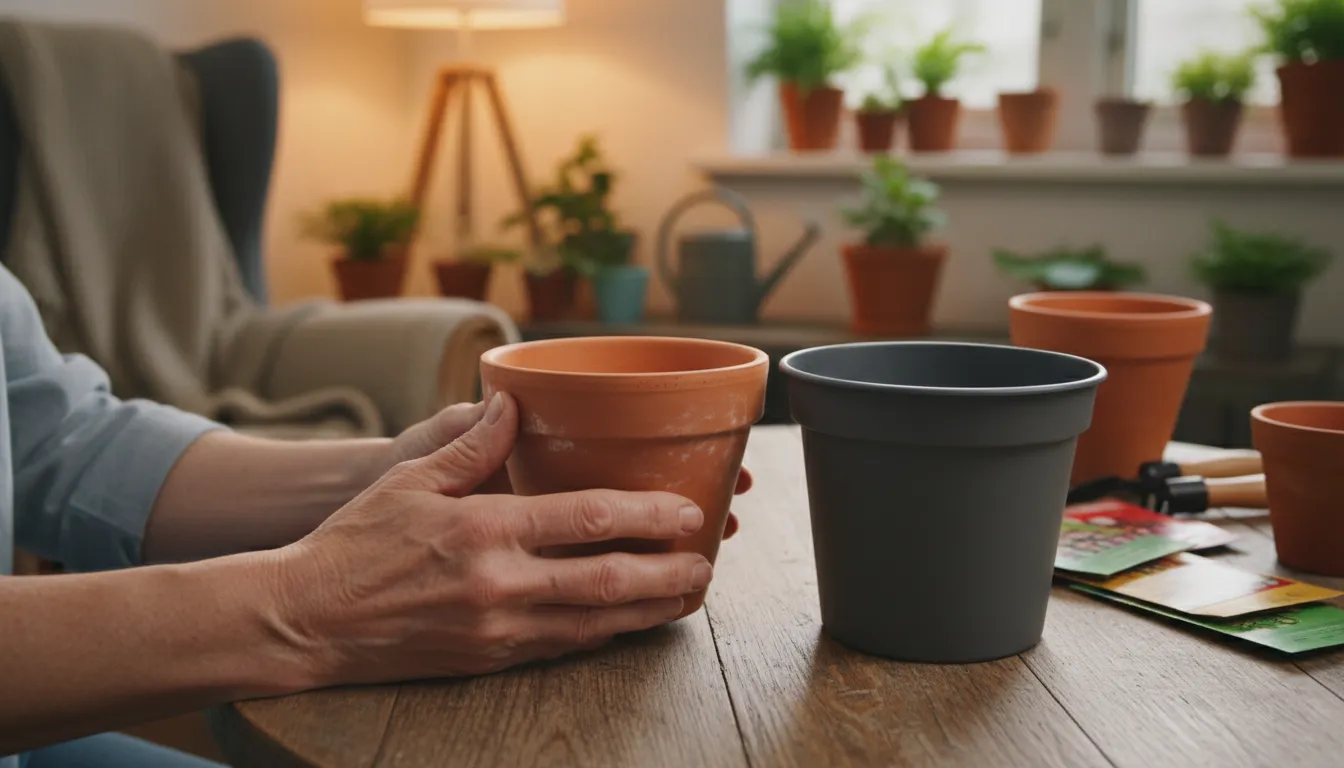
Selecting the Perfect Pots and Planters
Your choice of containers directly impacts your plants’ health and your garden’s overall aesthetic. Do not just grab the first pot you see. Consider material, size, and drainage carefully. Each factor plays a vital role in successful container gardening.
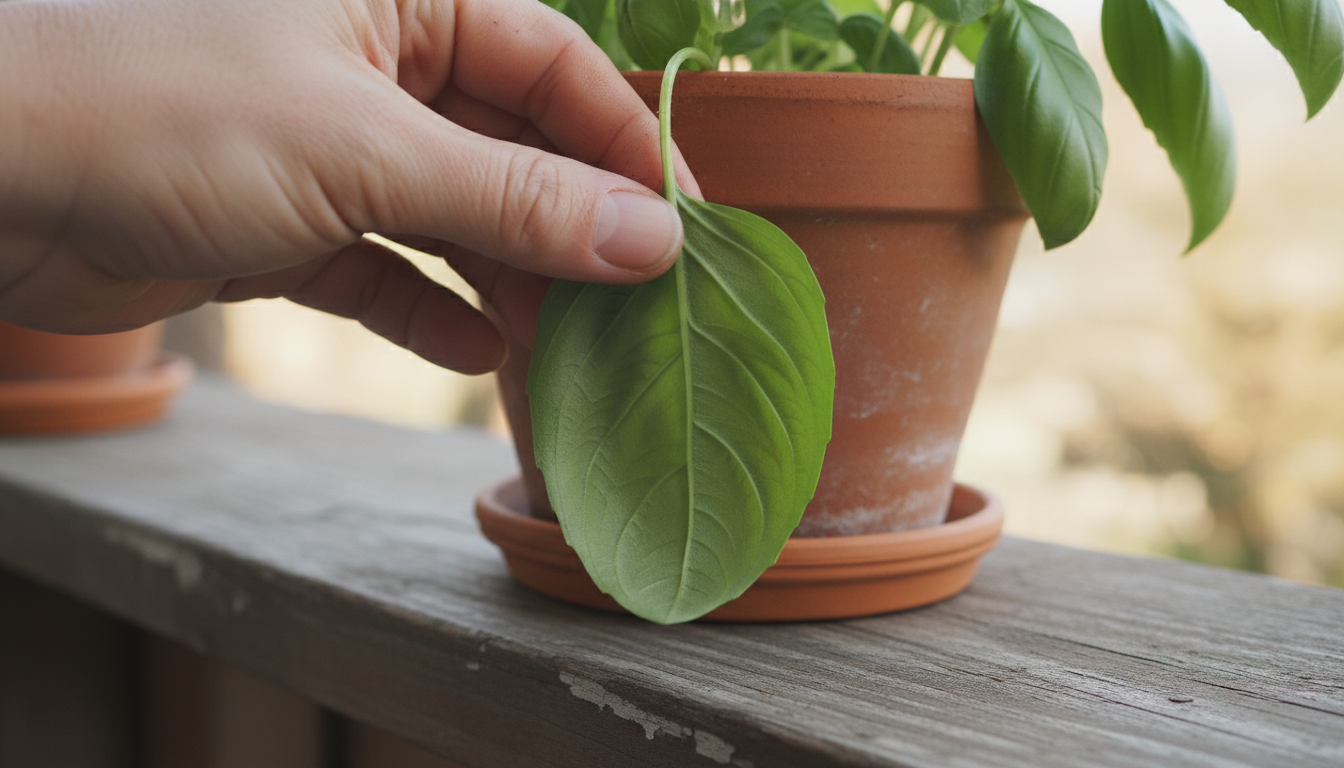
Container Materials: Pros and Cons
- Terracotta or Clay Pots: These classic pots are porous, meaning they allow air and moisture to pass through. This helps prevent root rot, a common issue in container gardening, because the soil dries out faster. However, this porosity also means you need to water plants in terracotta pots more frequently, especially in hot, sunny conditions. They are heavy when filled, which provides stability but makes moving them difficult. Terracotta can also crack in freezing temperatures if left outdoors.
- Plastic Pots: Lightweight, affordable, and available in countless colors and styles, plastic pots retain moisture well, reducing your watering frequency. This can be a double-edged sword; excessive moisture can lead to root rot if drainage is poor. Choose high-quality, UV-resistant plastic to prevent brittleness and fading over time. Many plastic options today replicate the look of more expensive materials like ceramic or stone.
- Glazed Ceramic Pots: Similar in weight and appearance to terracotta but non-porous, glazed ceramic pots retain moisture effectively. Their glossy finish adds elegance to any setting. Like terracotta, they are heavy and can be expensive. They also face risks of cracking in freezing conditions.
- Wooden Planters: Offering a rustic, natural aesthetic, wooden planters insulate plant roots from temperature extremes. Use rot-resistant woods like cedar or redwood, or ensure the wood is treated for outdoor use. Line them with plastic sheeting to extend their lifespan and prevent soil contact with the wood. Ensure proper drainage holes.
- Metal Containers: Galvanized tubs, old watering cans, or specialized metal planters add an industrial or vintage charm. Metal heats up quickly in the sun, potentially cooking roots, so choose lighter colors or place them in shadier spots. Ensure they have adequate drainage holes.
- Fabric Grow Bags: Made from breathable, non-woven fabric, these bags offer excellent aeration, preventing root circling and promoting a healthier root system. They are lightweight, affordable, and easy to store when empty. Fabric bags tend to dry out faster than plastic pots, requiring more frequent watering. They are an excellent choice for vegetables and herbs in balcony planters.

Size Matters: Giving Roots Room to Grow
The right container size provides adequate space for root development and soil volume to hold moisture and nutrients. A pot too small stunts your plant’s growth and dries out quickly. A pot too large might hold too much moisture, potentially leading to root rot, and wastes potting mix.
- Small Containers (6-8 inches): Ideal for herbs, annual flowers, lettuce, and small succulents.
- Medium Containers (10-14 inches): Perfect for single tomato plants, peppers, bush beans, larger herbs, and compact flowering plants.
- Large Containers (15+ inches): Best for larger vegetables like indeterminate tomatoes, blueberries, small fruit trees, or combinations of plants.
As a rule of thumb, ensure your chosen container is at least as deep as your plant’s mature root ball will be wide. For most vegetables, a minimum depth of 12 inches is a good starting point.
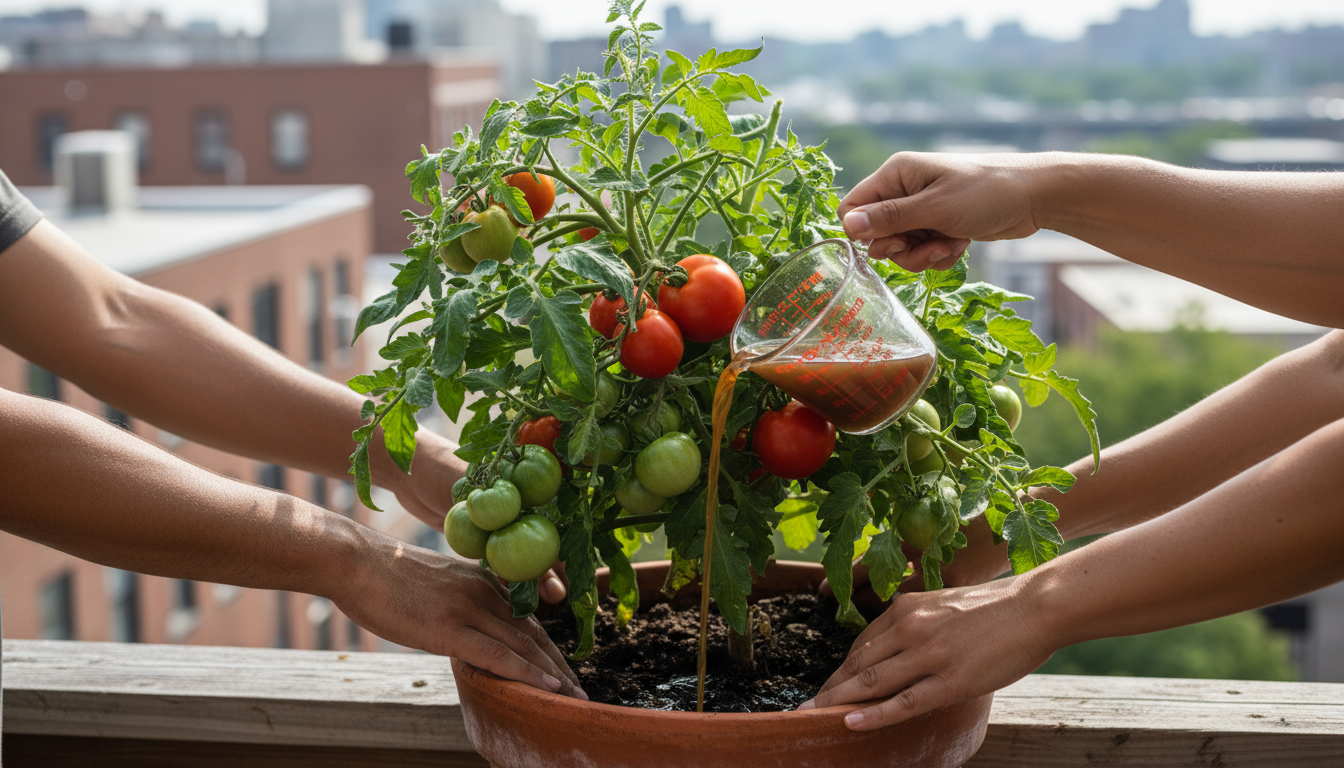
The Critical Role of Drainage Holes
Every container must have drainage holes at the bottom. Without them, water accumulates, suffocating roots and leading to root rot. If a pot lacks holes, you must drill them yourself. A single large hole is better than multiple small ones, but several smaller holes work too. Do not place rocks or broken pot pieces at the bottom of the container. This practice, a common gardening myth, actually impedes drainage. It creates a perched water table, keeping the soil at the bottom saturated. Simply ensure the drainage holes remain clear.

Building a Healthy Foundation: Soil and Drainage
The soil in your containers is not the same as garden soil. You need a specialized potting mix designed for container gardening. This mix provides the perfect environment for root growth, aeration, and water retention. Understanding drainage, how water moves through the soil, becomes paramount in containers.
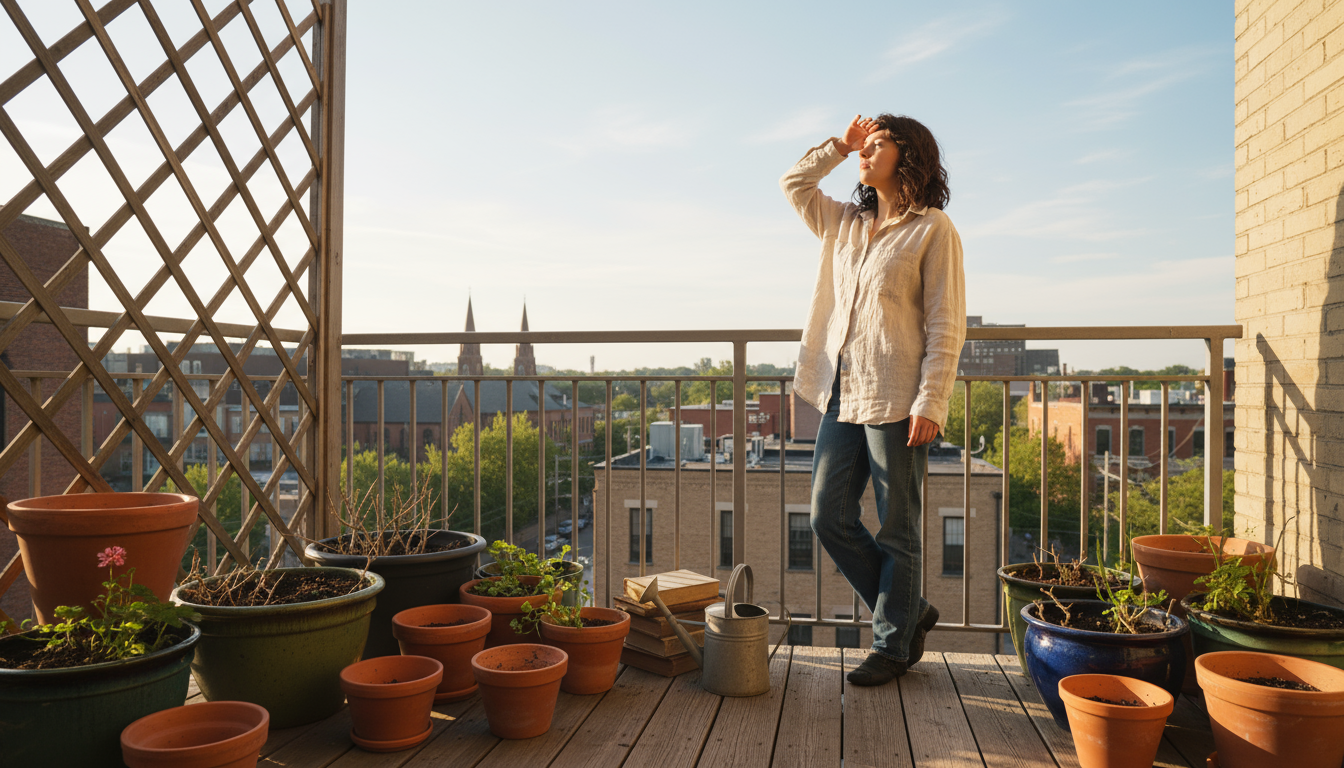
Why Potting Mix is Essential
Garden soil is too dense for containers. It compacts easily, preventing air and water from reaching roots. It also often contains weed seeds, pests, and diseases. Potting mix, in contrast, is lightweight, sterile, and formulated for optimal container performance. It contains a blend of ingredients that ensure good drainage while retaining sufficient moisture.
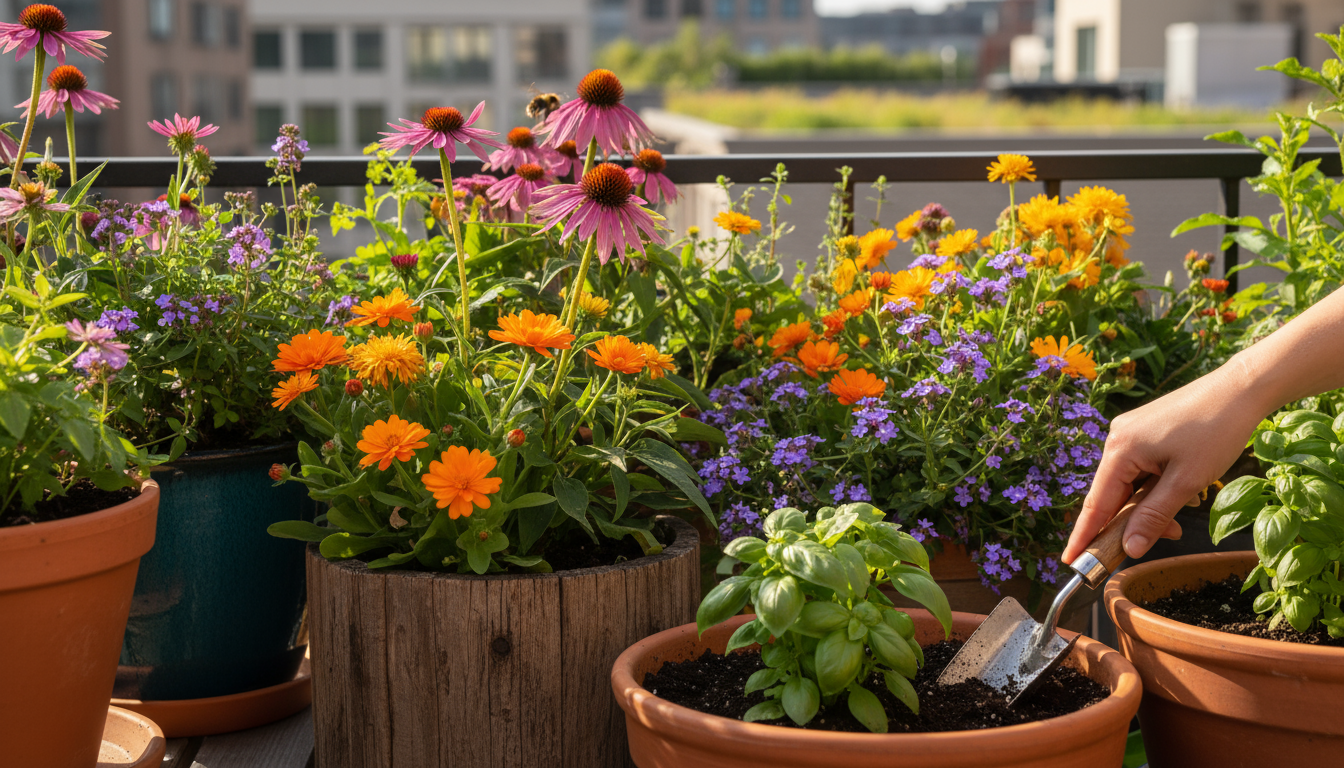
Key Components of a Quality Potting Mix
- Peat Moss or Coco Coir: These components retain moisture and provide a loose structure. Coco coir, derived from coconut husks, offers a more sustainable alternative to peat moss.
- Perlite or Vermiculite: These lightweight, porous materials improve drainage and aeration. Perlite, tiny white volcanic glass pieces, creates air pockets. Vermiculite, a mineral, also improves aeration and holds nutrients and water.
- Compost or Aged Bark: These organic materials provide nutrients and improve soil structure, fostering healthy microbial life.
- Wetting Agents: Some commercial mixes include a wetting agent to help the mix absorb water evenly, preventing dry spots.
You can buy ready-made potting mixes, or you can create your own. A common DIY recipe includes equal parts peat moss (or coco coir), perlite (or vermiculite), and compost. This combination provides a balanced environment for most container plants. Avoid “potting soil” that simply contains topsoil or garden soil. Always look for “potting mix” or “container mix.”

Understanding and Enhancing Drainage
Proper drainage prevents waterlogging. Waterlogging starves roots of oxygen, leading to root rot and plant death. Here is how to ensure good drainage in your container garden:
- Start with Drainage Holes: As discussed, your container absolutely requires drainage holes. Ensure these remain unobstructed.
- Use the Right Potting Mix: A high-quality potting mix is engineered for good drainage. It allows excess water to flow out freely.
- Elevate Containers: Place your patio pots or balcony planters on pot feet or bricks. This lifts the container slightly, allowing water to drain away completely and preventing drainage holes from getting blocked by the ground surface.
- Avoid Overwatering: Even with perfect drainage, constant overwatering can still saturate the soil and damage roots. Learn your plants’ specific watering needs.
Regularly check the moisture level of your potting mix by sticking your finger about an inch or two into the soil. If it feels dry, it is time to water. If it feels moist, wait. This simple practice prevents many drainage-related issues. Good soil and effective drainage form the backbone of a successful container garden.
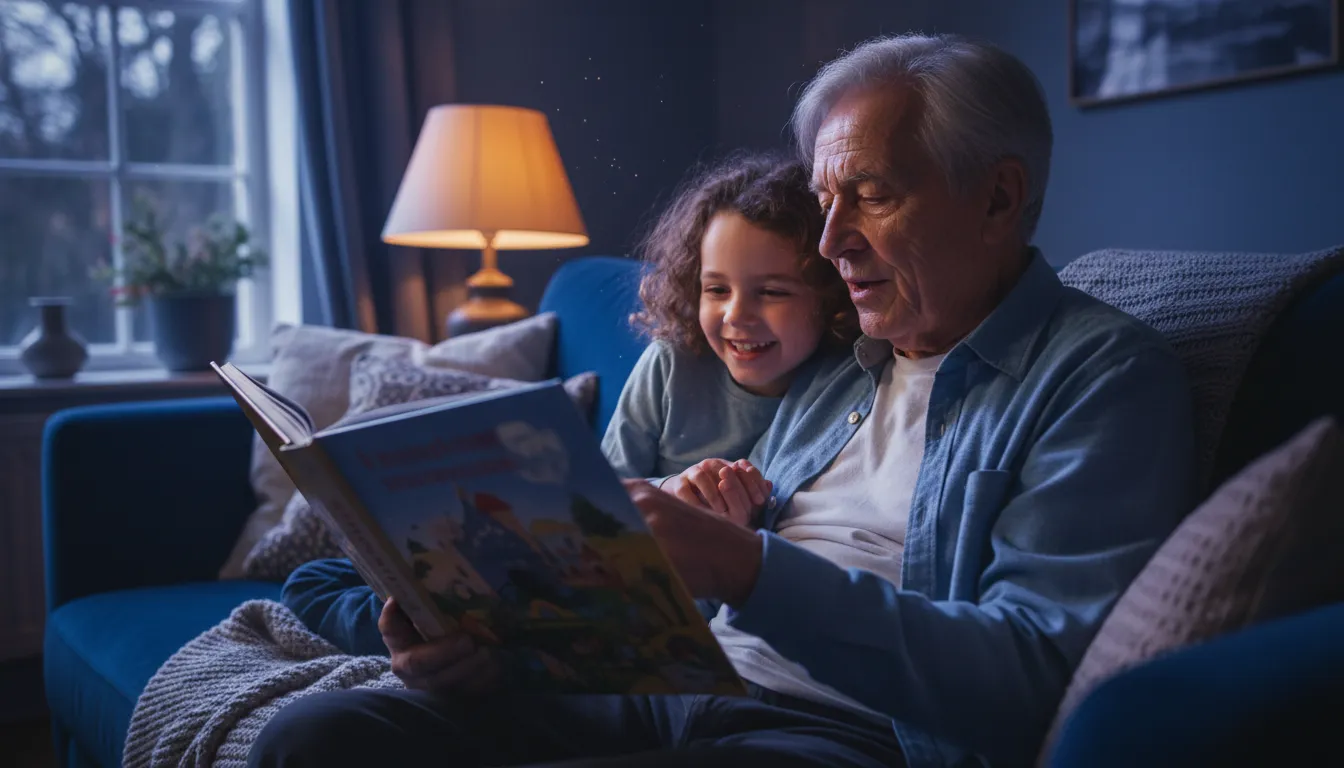
Nurturing Your Plants: Watering and Fertilizing Essentials
Once you have your containers and soil set, consistent care becomes crucial. Watering and fertilizing are two of the most important tasks in container gardening. Plants in pots rely entirely on you for their water and nutrient supply, unlike plants in the ground that can draw from a larger soil reservoir.
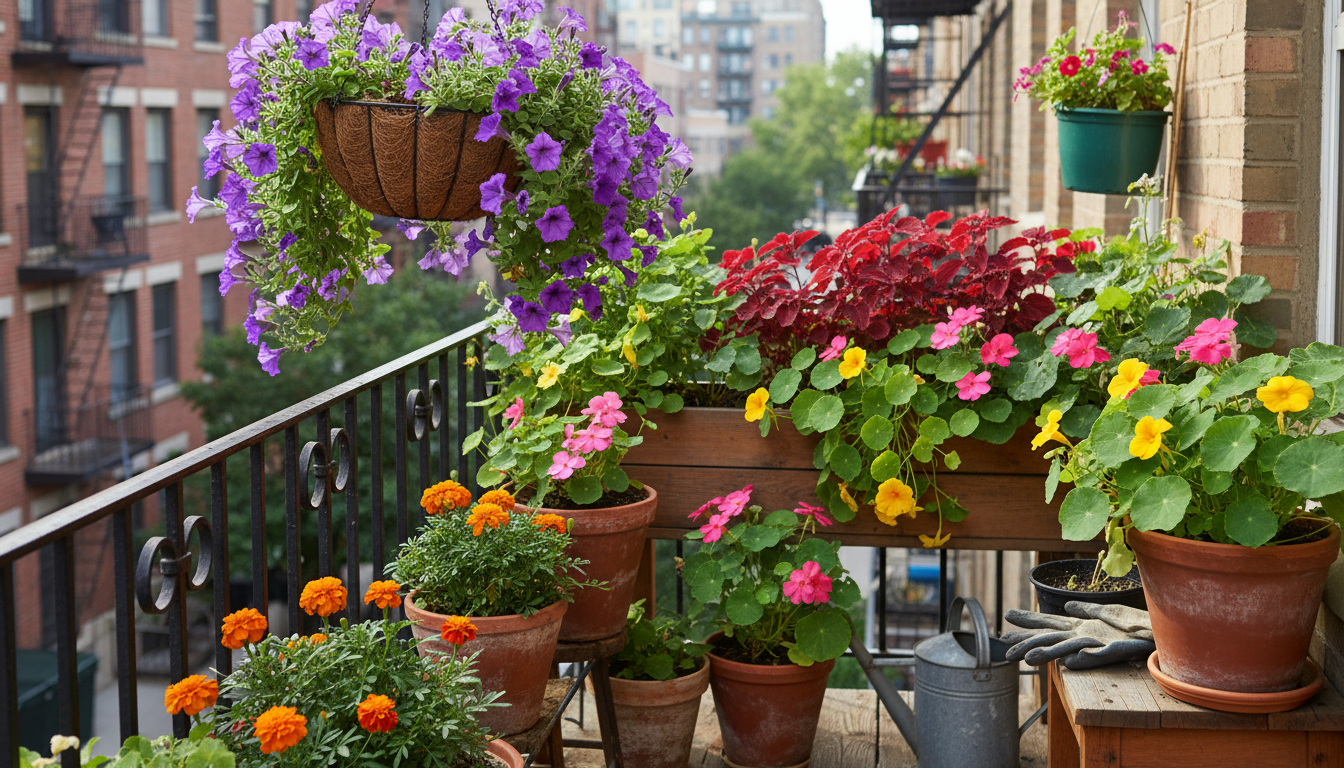
The Art of Watering Container Plants
Watering is often the trickiest part for new container gardeners. Too much water drowns roots, while too little causes wilting and stress. The frequency of watering depends on several factors:
- Container Size: Smaller pots dry out faster than larger ones.
- Container Material: Porous materials like terracotta require more frequent watering than plastic or glazed ceramic.
- Plant Type: Some plants, like succulents, prefer drier conditions, while others, such as leafy greens, need consistent moisture.
- Weather: Hot, windy, or sunny weather increases water evaporation, necessitating more frequent watering.
- Growth Stage: Actively growing, flowering, or fruiting plants use more water than dormant plants.
How to Water Effectively:
- Check Soil Moisture: Do not water on a schedule. Instead, feel the soil. Stick your finger about an inch or two into the potting mix. If it feels dry, it is time to water. If it feels moist, wait. For larger pots, you might need to check deeper.
- Water Thoroughly: When you do water, do so until water begins to drain from the bottom of the pot. This ensures the entire root ball receives moisture. If water runs out quickly, the soil might be too dry and compacted. Water slowly in stages to allow for absorption.
- Water at the Base: Avoid spraying water on foliage, especially in the evening. Wet leaves can encourage fungal diseases. Focus your watering effort on the soil line.
- Consider a Self-Watering Planter: These planters have a built-in reservoir that wicks water up to the soil, reducing how often you need to water. They are excellent for busy gardeners or when you go away for a few days.
You will develop a feel for your plants’ watering needs over time. Pay attention to wilting leaves; these indicate stress, often from lack of water, though sometimes from overwatering. Observe and adjust.
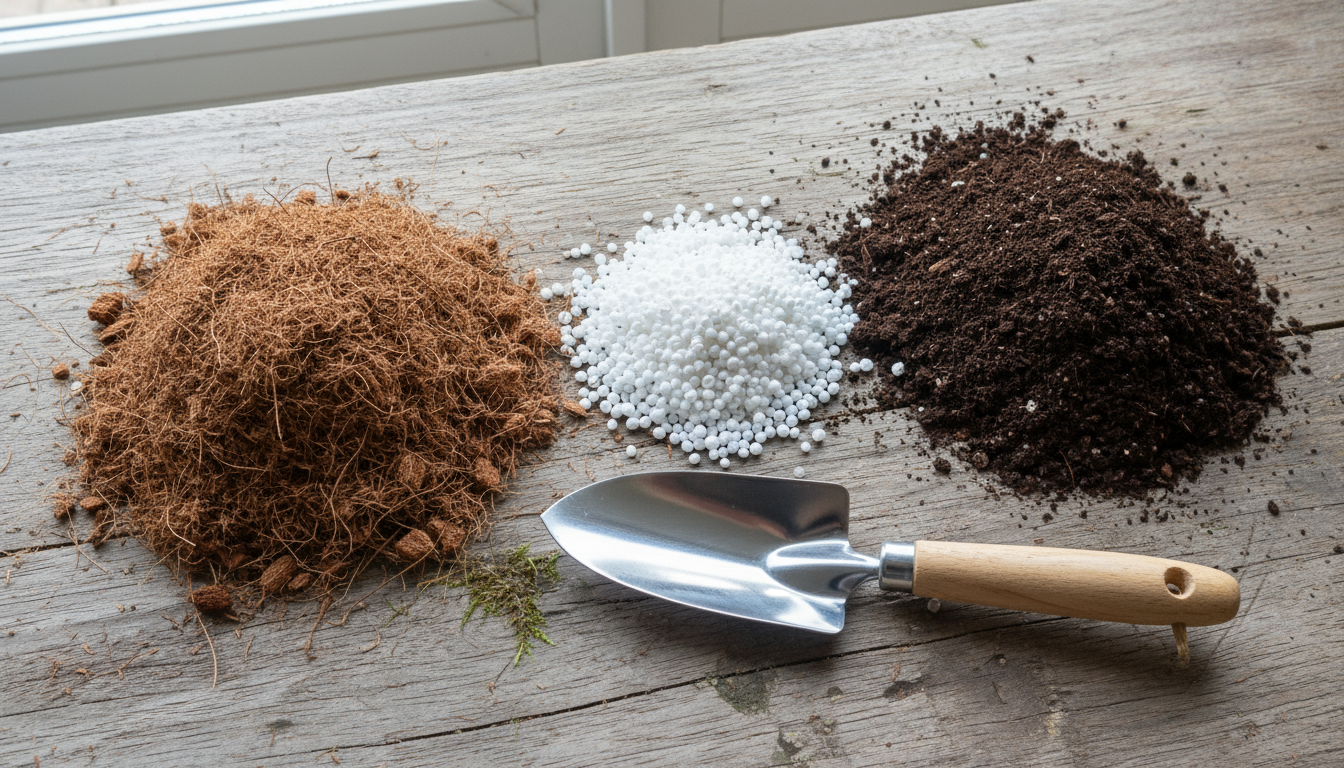
Fertilizing for Bountiful Growth
Potting mix starts with some nutrients, but plants quickly deplete them, especially with frequent watering. You need to replenish these nutrients through fertilization. Think of it as providing regular meals for your plants.
Types of Fertilizers:
- Liquid Fertilizers: These are diluted in water and applied directly to the soil. Plants absorb nutrients quickly. Apply liquid fertilizers every 2-4 weeks during the growing season.
- Slow-Release Granular Fertilizers: These pellets slowly release nutrients over several months. You mix them into the potting mix when planting or sprinkle them on top. This offers convenience, as you fertilize less frequently.
- Organic Fertilizers: Options like compost tea, worm castings, or fish emulsion provide nutrients while also improving soil health. They release nutrients more slowly and gently than synthetic fertilizers.
Fertilizing Guidelines:
- Read the Label: Always follow the instructions on your chosen fertilizer. Over-fertilizing can harm plants, leading to burnt roots or excessive foliage at the expense of flowers or fruit.
- Start with a Balanced Fertilizer: For most general container gardening, a balanced fertilizer (e.g., 5-5-5 or 10-10-10, referring to nitrogen, phosphorus, and potassium percentages) works well.
- Adjust for Plant Needs: Fruiting plants (tomatoes, peppers) often benefit from fertilizers higher in phosphorus and potassium when they start flowering. Leafy greens prefer higher nitrogen for lush foliage.
- Fertilize Actively Growing Plants: Begin fertilizing a few weeks after planting, once your plants have established themselves. Reduce or stop fertilizing during dormant periods or when growth slows significantly.
A consistent watering and feeding regimen helps your plants thrive, producing abundant harvests and vibrant blooms. Your attentive care makes all the difference in your balcony planters and patio pots.
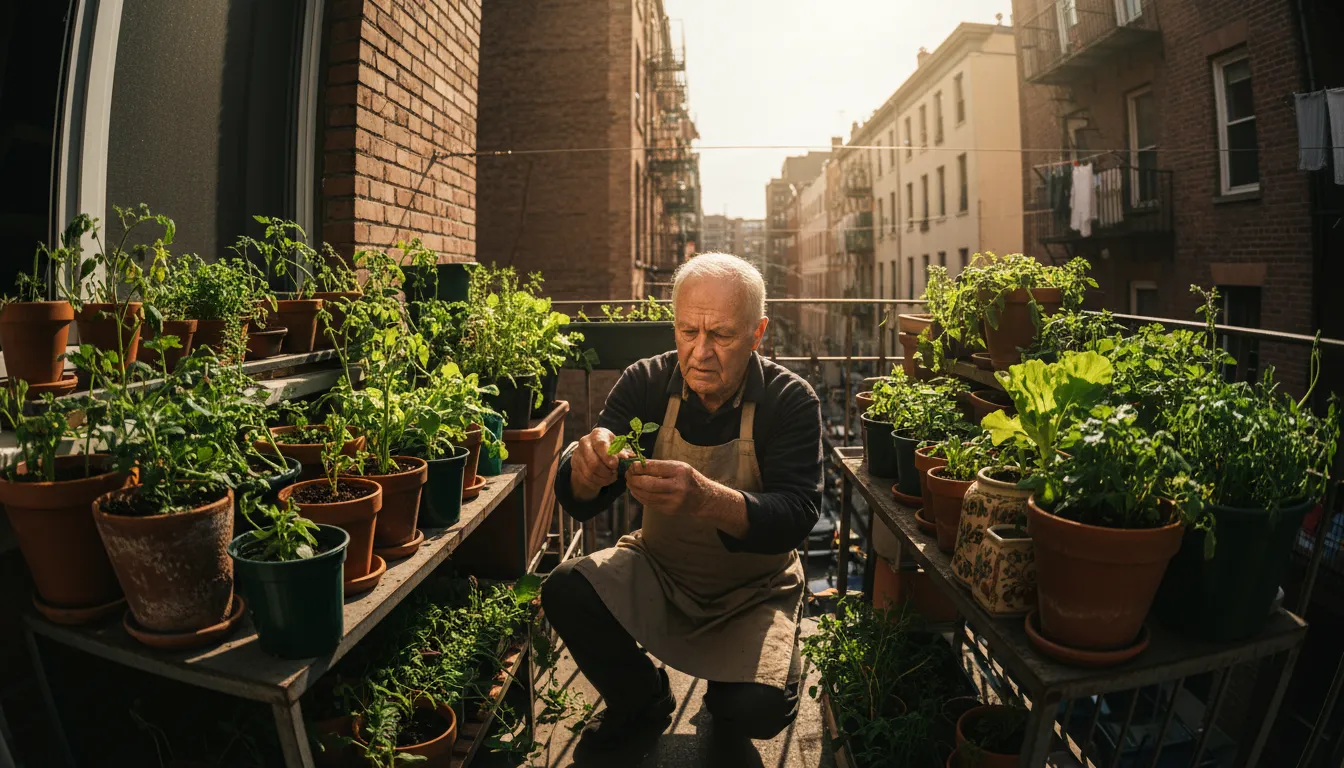
Thriving in a Pot: Best Plants for Small-Space Containers
Choosing the right plants is key to a successful and low-maintenance container garden. Not all plants adapt well to life in a pot. Focus on compact varieties, those with shallow root systems, or plants bred specifically for container growth. This section guides you through excellent choices for your small space gardening endeavors.
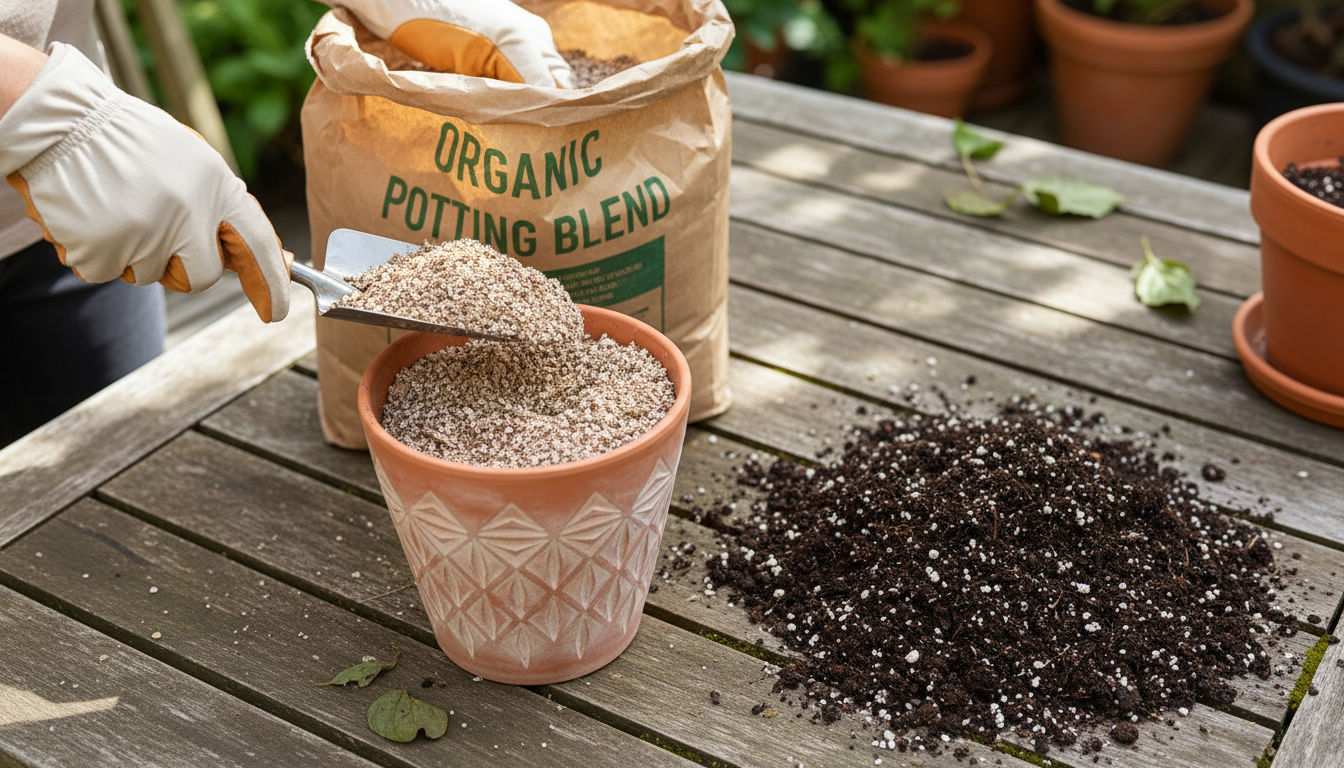
Vegetables That Love Containers
Growing your own food in pots is incredibly rewarding. Many popular vegetables adapt wonderfully to containers.
- Tomatoes: Look for “bush,” “dwarf,” or “patio” varieties. Determinate types, which grow to a set size and produce their fruit within a short period, are often better for containers than indeterminate types that keep growing. A 5-gallon container (or larger) per plant is ideal.
- Peppers: Bell peppers, hot peppers, and sweet peppers all do well in pots. Choose a pot at least 10-12 inches deep. They enjoy full sun and consistent moisture.
- Leafy Greens: Lettuce, spinach, arugula, and kale are fantastic for balcony planters. They have shallow roots and produce multiple harvests. You can even plant different varieties together for a “salad bowl” effect. A 6-8 inch pot works for individual plants, or a wider, shallower container for multiple plantings.
- Radishes and Carrots: Opt for shorter, round varieties of carrots (e.g., ‘Paris Market’ or ‘Danvers Half Long’) and any radish variety. Ensure your container is deep enough for root development, at least 6-8 inches.
- Bush Beans: Unlike pole beans, bush beans do not require extensive trellising and perform well in 8-10 inch pots. Harvest frequently to encourage more production.
- Cucumbers: Select “bush” or “patio” cucumber varieties. While they still appreciate a small trellis for support, their compact growth makes them manageable in containers. A 12-18 inch pot is suitable.
- Potatoes: Grow potatoes in large grow bags or even specialized potato growing containers. As the plant grows, add more soil or compost to “hill” the potatoes, encouraging more tuber formation.
- Strawberries: Alpine strawberries are excellent for hanging baskets or smaller pots. Everbearing or day-neutral varieties are also suitable for patio pots, offering continuous harvests.
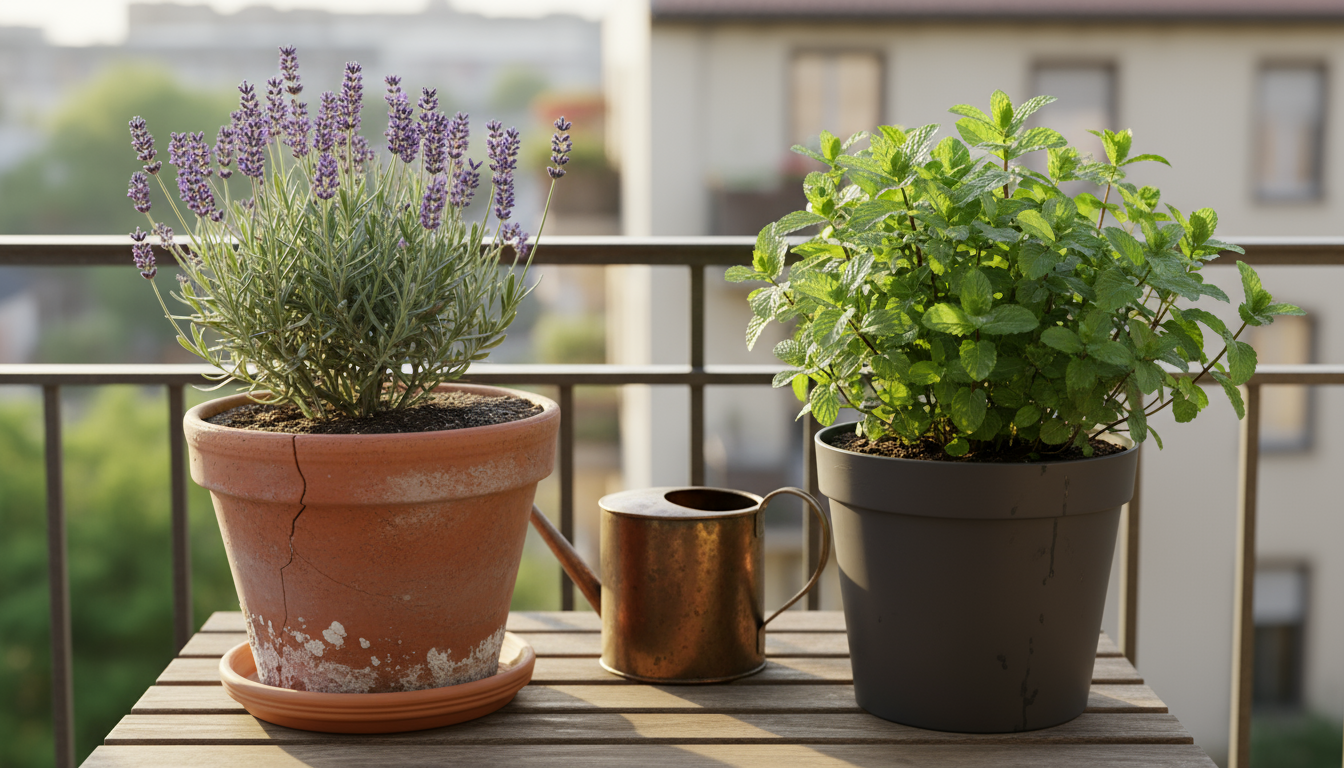
Herbs: The Perfect Container Companions
Herbs are perhaps the easiest and most practical plants for container gardening. They generally have modest root systems, love sunlight, and provide fresh flavor for your cooking just steps away.
- Basil: A sun-lover that thrives in pots. Pinch back flowers to encourage more leaf production.
- Mint: This aggressive grower is best grown in its own container to prevent it from taking over other plants. It tolerates partial shade.
- Rosemary, Thyme, Oregano, Sage: These Mediterranean herbs enjoy full sun and well-drained soil. They are relatively drought-tolerant once established.
- Chives: Easy to grow from seed or division, chives offer oniony flavor and attractive purple flowers.
- Parsley: Both flat-leaf and curly parsley grow well in pots, preferring consistent moisture.
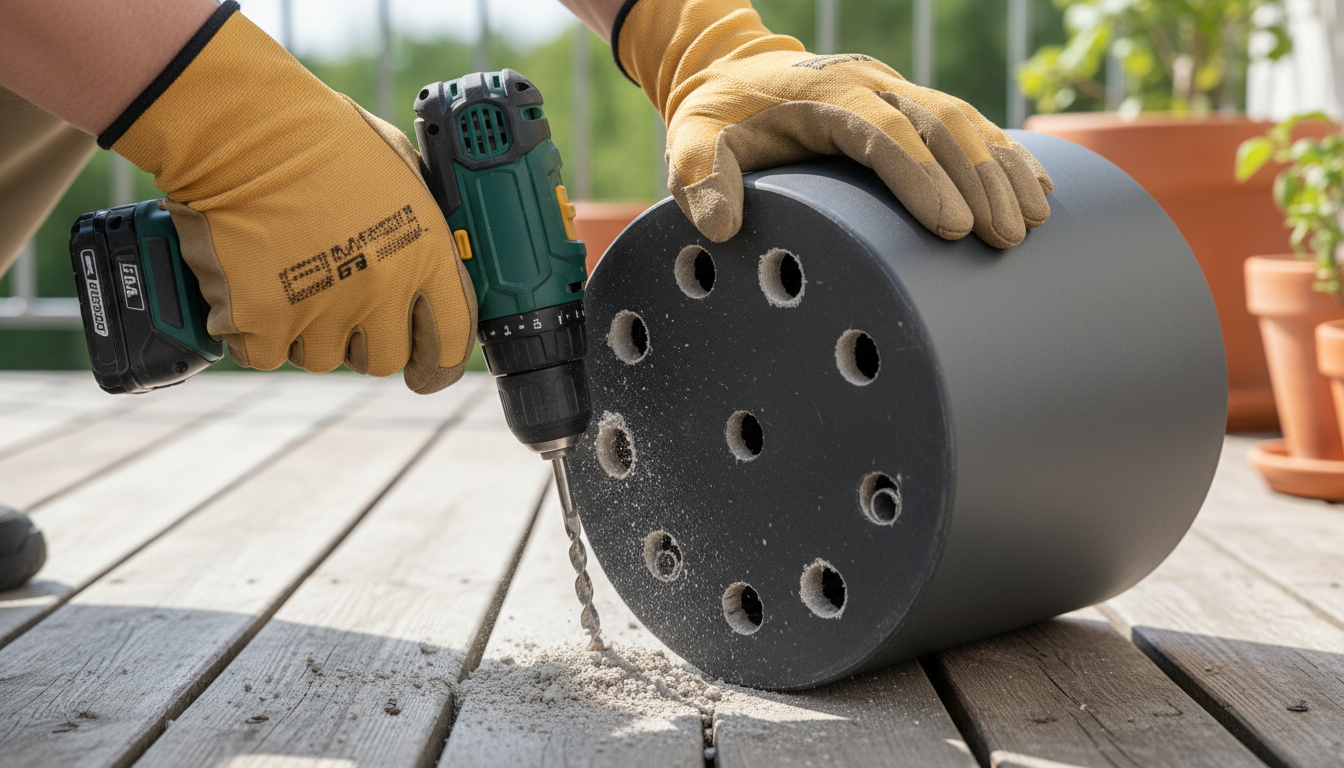
Flowers for Dazzling Container Displays
Bring color, fragrance, and pollinators to your small space with these beautiful container-friendly flowers.
- Petunias, Marigolds, Impatiens, Geraniums: These annuals provide continuous blooms throughout the growing season. Petunias spill beautifully from hanging baskets, while marigolds deter some pests.
- Nasturtiums: Edible flowers and leaves add a peppery kick to salads. They trail beautifully from pots.
- Dianthus: Offering charming, often fragrant blooms, dianthus are compact and ideal for sunny spots.
- Pansies and Violas: Excellent for cooler weather, providing cheerful color in spring and fall.
- Coleus: Grown for their vibrant, patterned foliage rather than flowers, coleus thrive in shade to partial sun.
When selecting plants, consider your climate, the amount of sunlight your space receives, and your commitment to watering. Group plants with similar light and water needs in the same container for easier care. Your balcony planters and patio pots will flourish with these thoughtful selections.
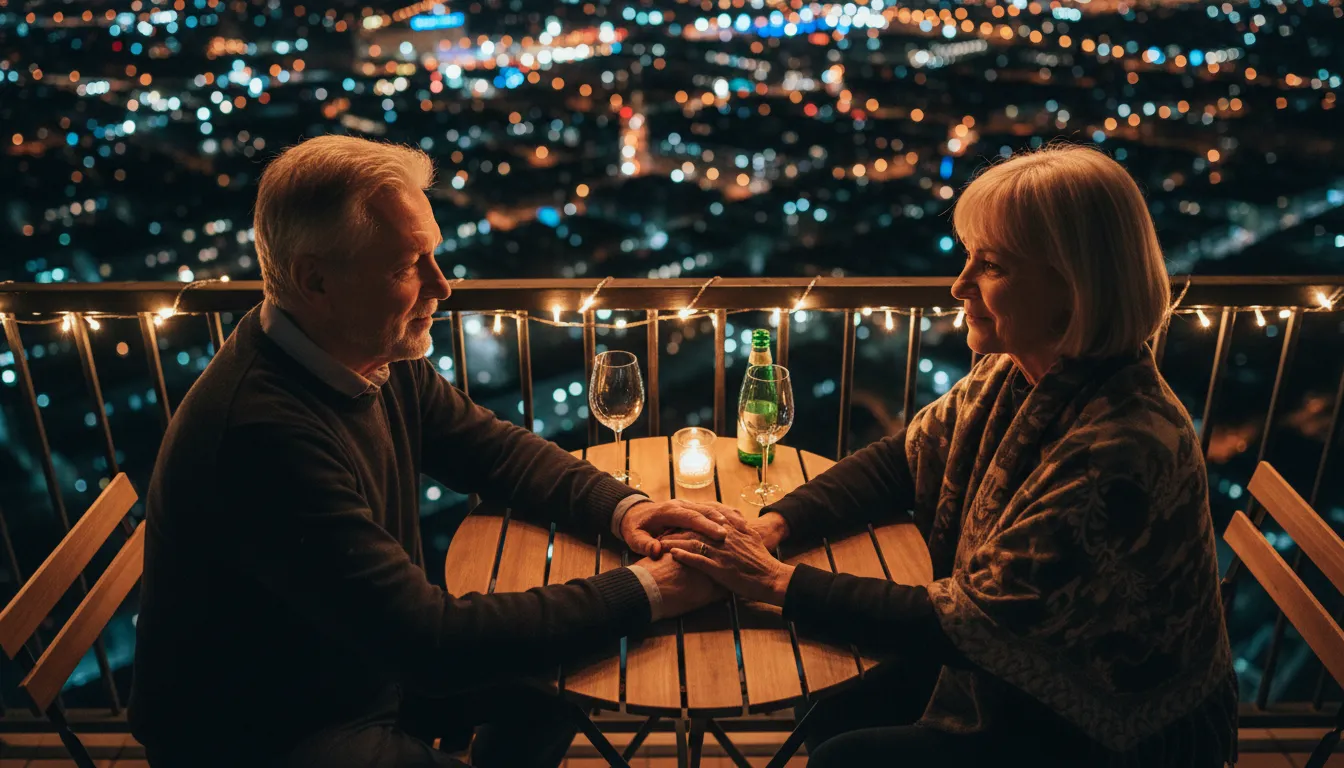
Creating Stunning Container Displays
Container gardening allows for immense creativity in designing beautiful and functional displays. Think of your containers as living sculptures that enhance your outdoor space. You can apply basic design principles to elevate your small space gardening from haphazard pots to intentional, eye-catching arrangements.
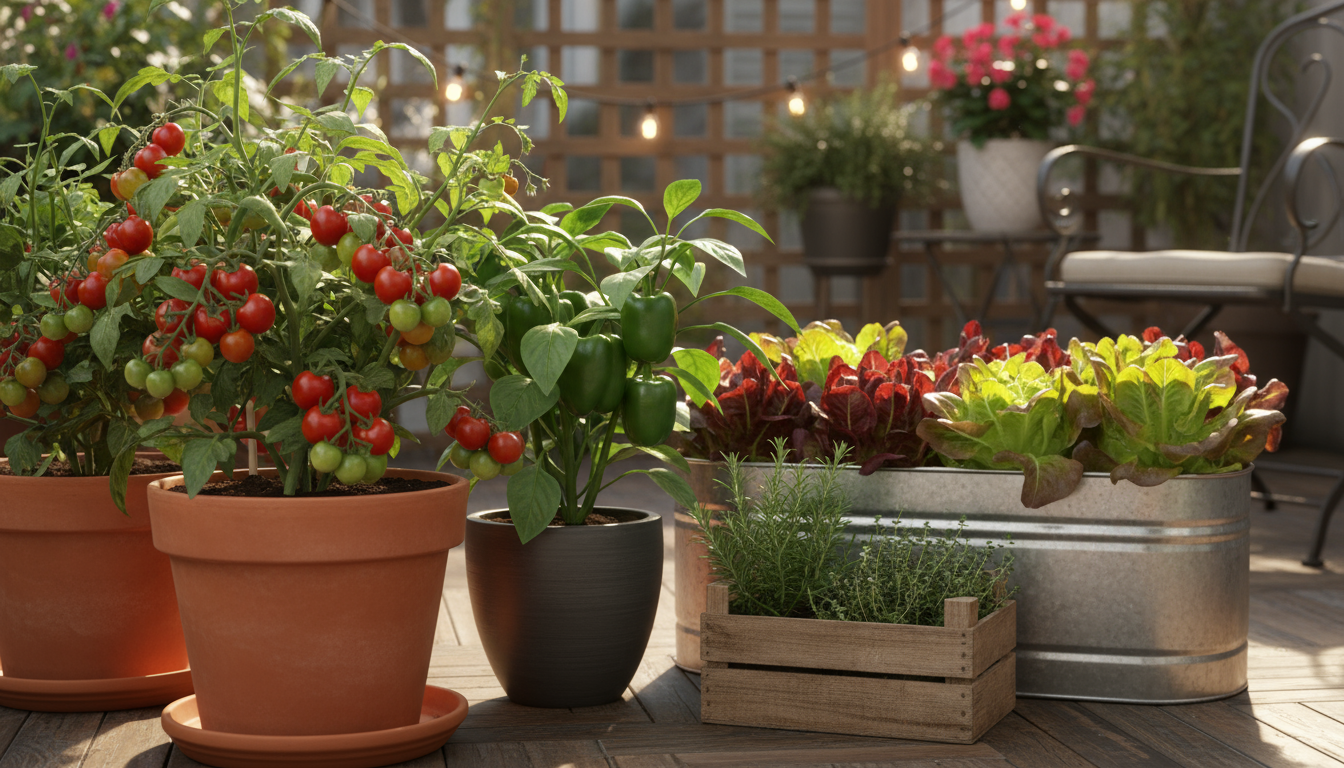
The “Thriller, Filler, Spiller” Principle
This popular design guideline helps you create dynamic and balanced container arrangements. It involves selecting three types of plants for each pot:
- Thriller: This is your focal point plant. It provides height, drama, or a striking architectural element. Examples include a tall ornamental grass, a small upright shrub, a standard fuchsia, or a tall tomato plant. Place the thriller in the center or towards the back of the container, depending on whether you view it from all sides or against a wall.
- Filler: These plants complement the thriller, filling out the middle ground of the container. They provide volume, texture, and often a contrasting color. Good fillers include petunias, marigolds, coleus, or leafy greens. Arrange fillers around the thriller.
- Spiller: These plants cascade over the edge of the container, softening its hard lines and adding movement. Trailing nasturtiums, sweet potato vine, creeping jenny, or trailing rosemary make excellent spillers. Plant them along the edges of the pot.
This combination creates a lush, full, and visually appealing display. Experiment with different plant combinations, considering color, texture, and form. For instance, you might pair a purple fountain grass (thriller) with bright yellow marigolds (filler) and a silver dichondra (spiller).
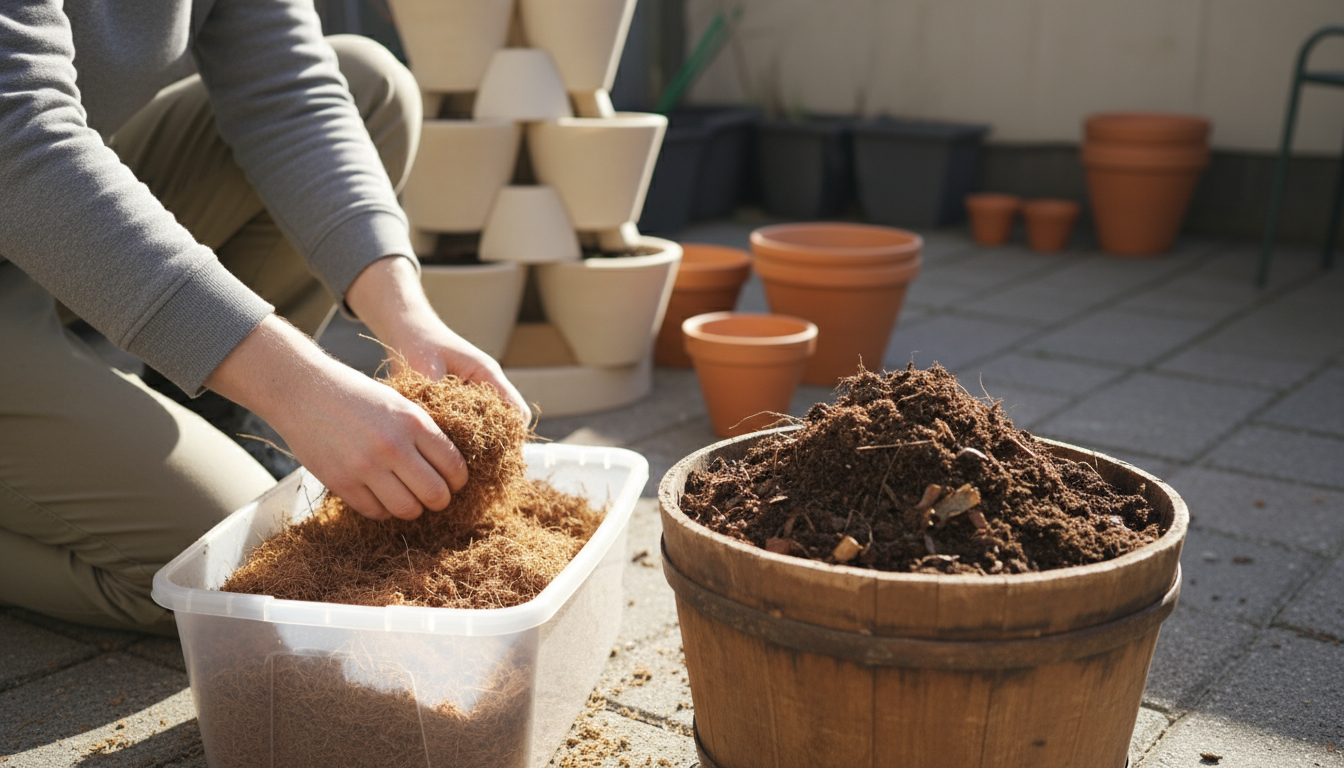
Consider Your Space and Lighting
Before you begin arranging, assess your small space. How much sun does your balcony or patio receive? This dictates your plant choices. Full sun plants need at least six hours of direct sunlight. Partial sun or shade plants thrive with less. Match your plants’ needs to your available light. Do not try to force sun-loving plants into a shady corner; they will not flourish.
Think about the overall size and scale of your containers in relation to your space. A single massive pot might overwhelm a tiny balcony, while too many tiny pots can look cluttered. Group pots of varying sizes and heights to create visual interest. Use risers or overturned pots to elevate some containers, adding vertical dimension to your small space gardening.
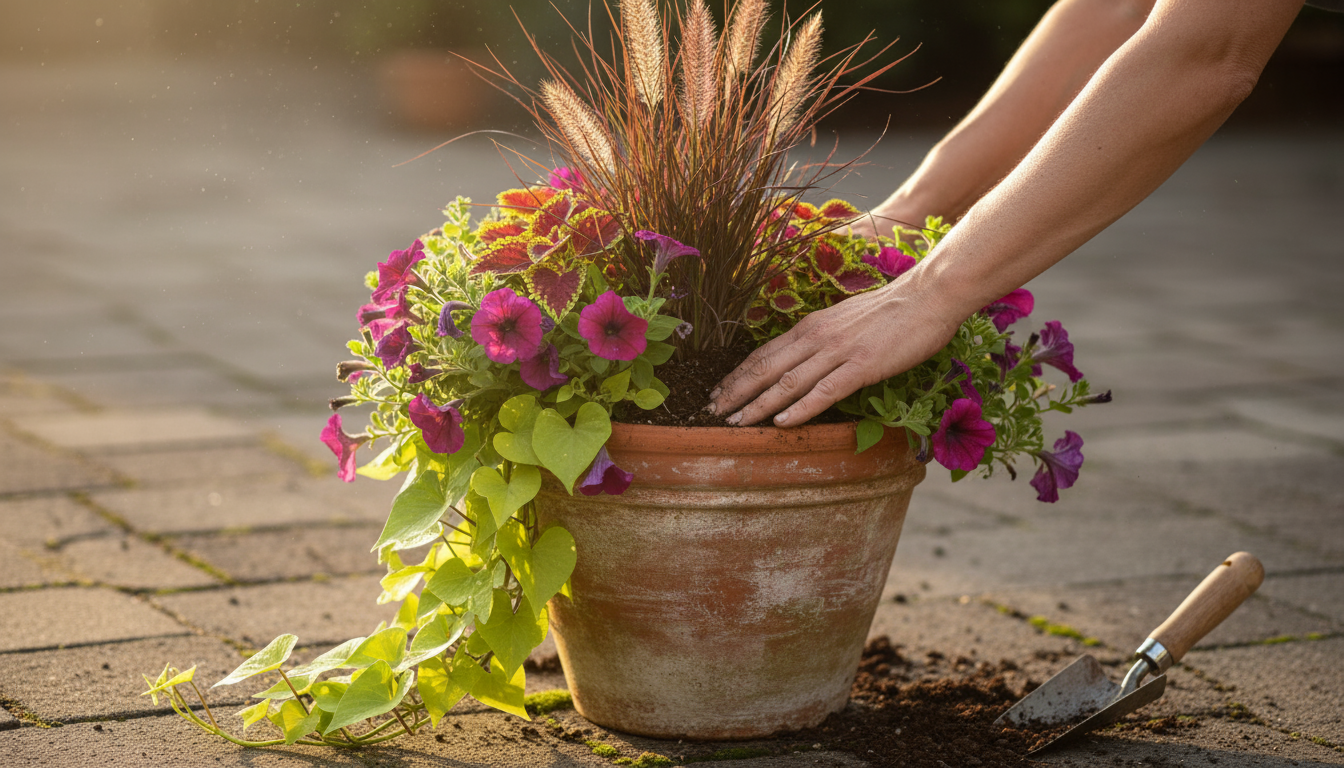
Color and Texture Harmony
Play with color. You can choose a monochromatic scheme using different shades of the same color, a complementary scheme using opposing colors on the color wheel (e.g., purple and yellow), or a vibrant mix of many colors. Do not forget foliage. Plants with variegated leaves, deep purple foliage, or fine, feathery textures add as much visual interest as flowers. A container filled entirely with different shades and textures of green can be just as stunning as a floral arrangement.
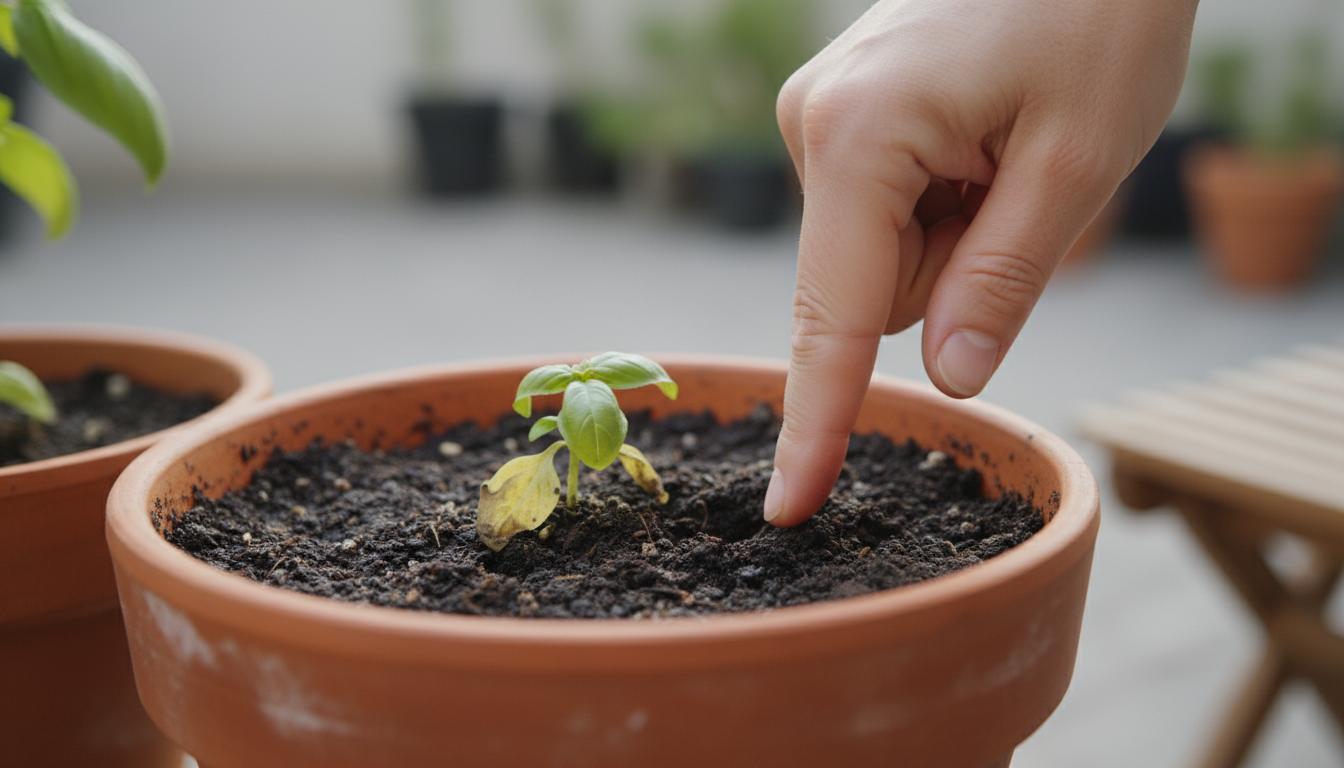
Creating Thematic Gardens
You can also design your container garden around a theme. An “Italian Herb Garden” might feature basil, oregano, rosemary, and parsley. A “Salsa Garden” could include tomatoes, peppers, cilantro, and onions. A “Pollinator Paradise” would combine flowers like coneflowers, calendula, and verbena to attract bees and butterflies to your balcony. These thematic approaches make selecting plants and arranging your patio pots even more enjoyable and purposeful.
Remember that container gardens are dynamic. You can swap out plants seasonally, try new combinations, and adapt your design as your preferences or the available light changes. Embrace the flexibility of container gardening to continually refresh and enjoy your living space.
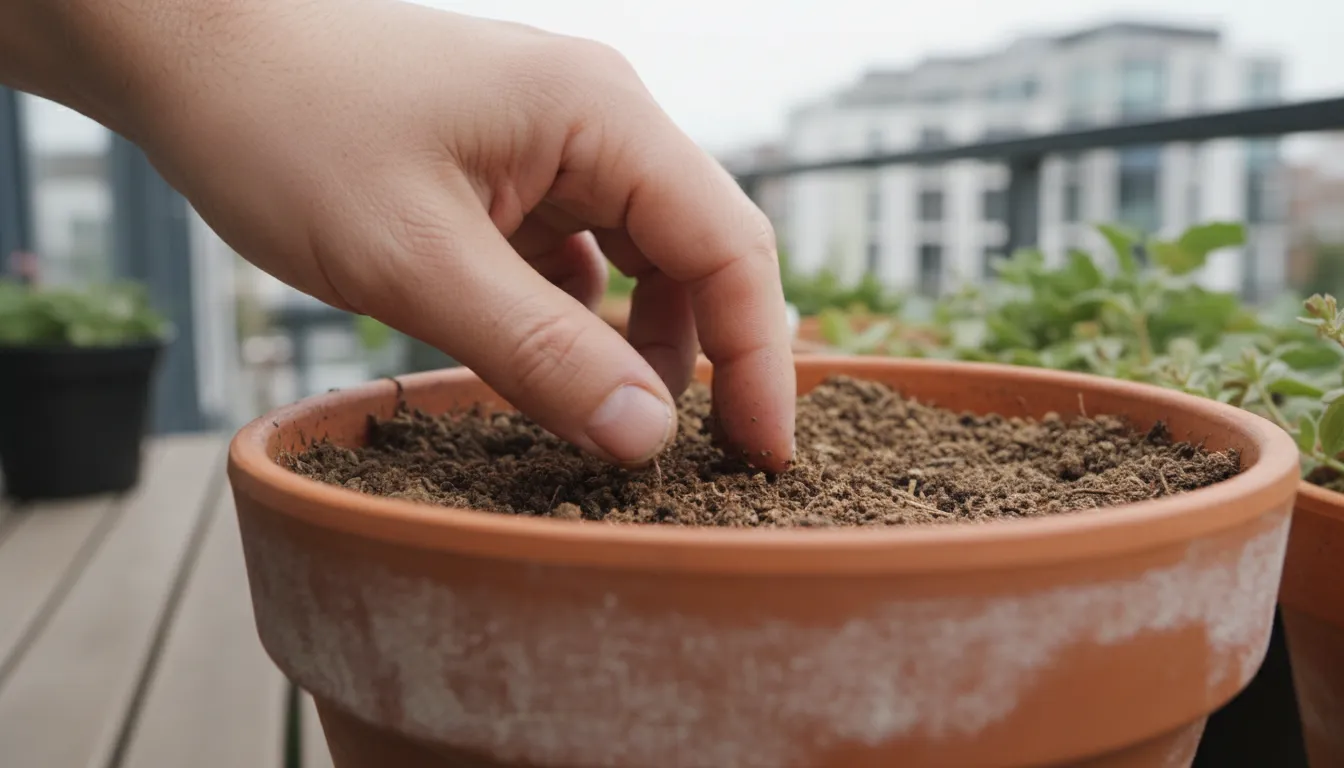
Avoiding Pitfalls: Common Container Gardening Mistakes and Solutions
Even with the best intentions, new container gardeners often encounter common challenges. Identifying these pitfalls early helps you troubleshoot effectively and keeps your plants healthy. Learn to spot the signs of distress and implement practical solutions.
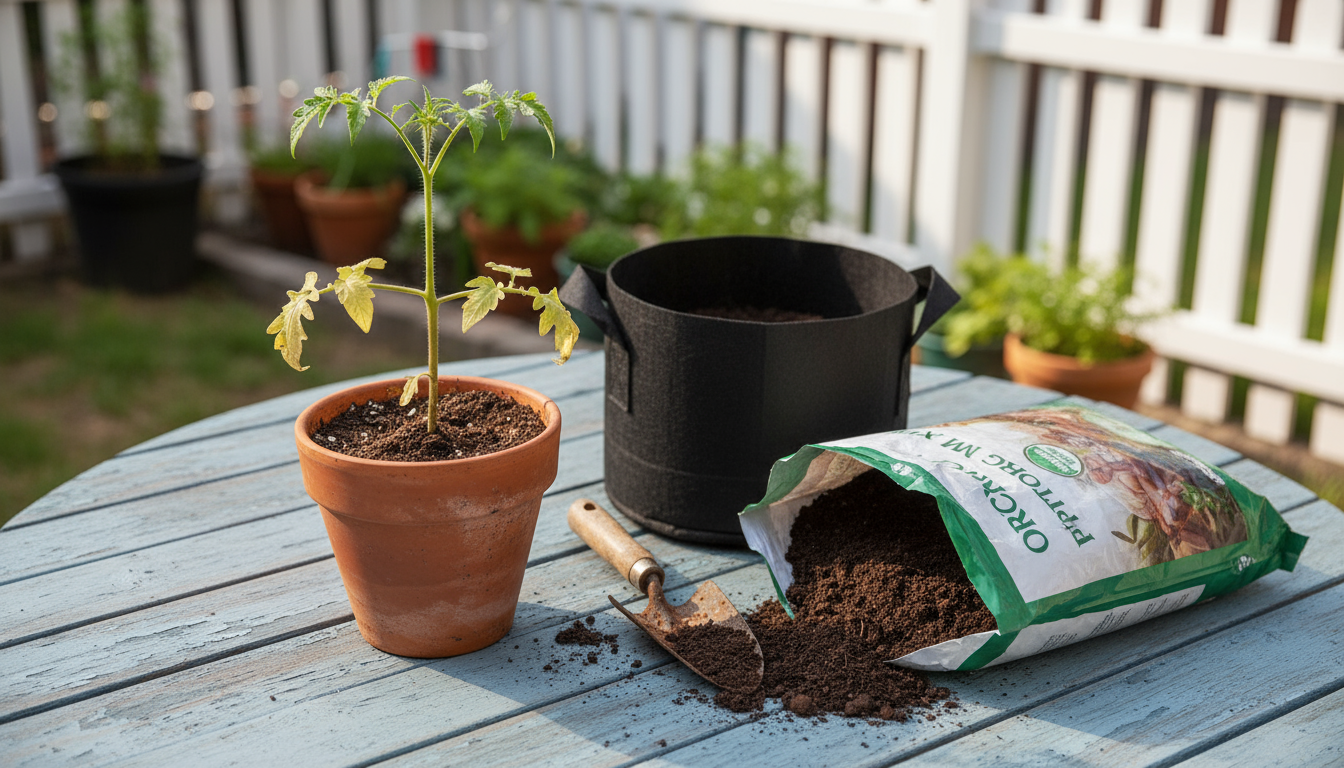
Mistake 1: Improper Watering
Problem: This is the most frequent issue. Both overwatering and underwatering lead to stressed plants. Overwatered plants often show yellowing leaves, stunted growth, and soft, mushy stems. Underwatered plants wilt, leaves crisp, and soil pulls away from the pot edges.
Solution: Do not water on a strict schedule. Instead, check the soil moisture daily by sticking your finger two inches deep. Water thoroughly until it drains from the bottom. For consistently dry pots, consider larger containers or a self-watering system. For perpetually wet pots, improve drainage, check for blocked holes, or consider a less water-retentive potting mix.
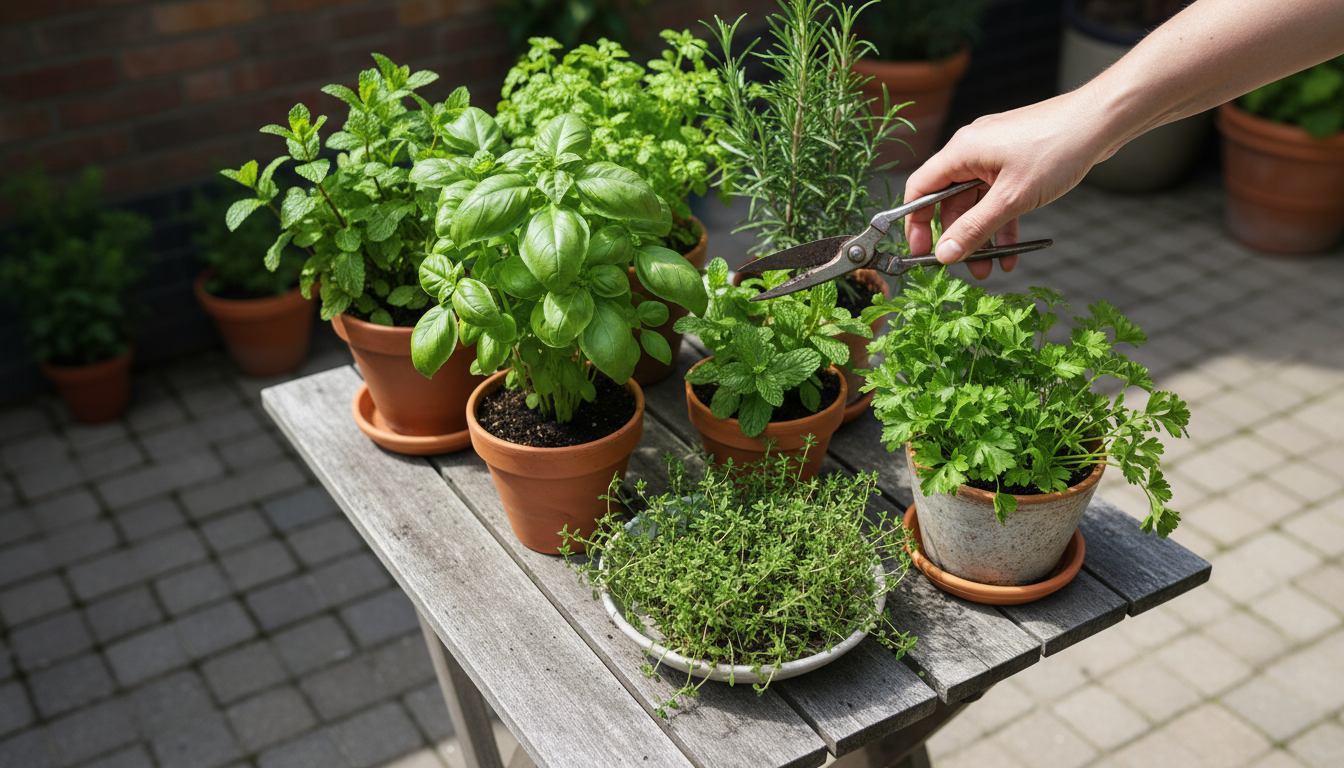
Mistake 2: Insufficient Drainage
Problem: Lack of drainage holes or blocked holes causes water to pool at the bottom of the container, leading to root rot. Leaves turn yellow, and the plant eventually collapses.
Solution: Always ensure every pot has adequate drainage holes. If a pot lacks holes, drill them. Elevate your balcony planters on pot feet or bricks to allow water to flow freely. Never use gravel at the bottom of a pot; it worsens drainage. Use a quality, fast-draining potting mix.

Mistake 3: Wrong Pot Size
Problem: A pot too small restricts root growth, causing the plant to become “root-bound.” Growth slows, leaves yellow, and the plant dries out rapidly. A pot too large can hold too much moisture, potentially leading to root rot, and wastes potting mix.
Solution: Match the pot size to the mature plant’s needs. Most vegetables and larger flowers need at least a 10-12 inch diameter pot. Larger plants like tomatoes often require 5-gallon (15-18 inch) containers. Repot plants into larger containers as they grow if they outgrow their current home. As a general rule, upgrade to a pot that is 2-4 inches wider than the current one.
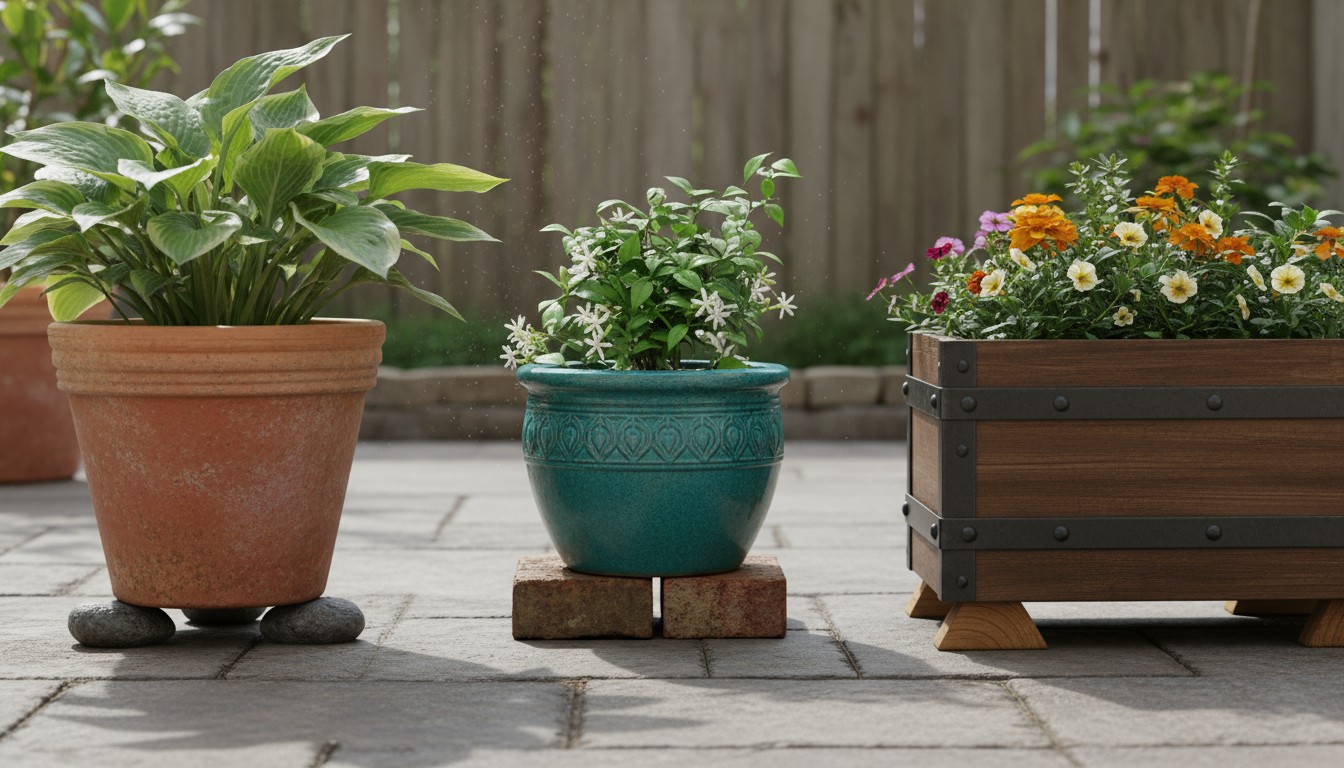
Mistake 4: Inadequate Sunlight
Problem: Plants requiring full sun will stretch, becoming leggy and pale, with few flowers or fruits, if they do not receive enough light. Plants needing shade will scorch and wilt in too much direct sun.
Solution: Assess your space’s sunlight exposure throughout the day. “Full sun” means at least 6 hours of direct sun. “Partial sun” or “partial shade” means 3-6 hours. “Full shade” means less than 3 hours. Choose plants that match your light conditions. Move balcony planters to sunnier or shadier spots as needed, if they are portable.

Mistake 5: Neglecting Fertilization
Problem: Potting mixes quickly lose nutrients through watering. Plants become nutrient-deficient, showing yellowing leaves, stunted growth, or poor flowering/fruiting.
Solution: Incorporate slow-release granular fertilizer into your potting mix at planting time, or begin a regular feeding schedule with liquid fertilizer every 2-4 weeks during the growing season. Always follow package directions carefully to avoid over-fertilizing, which can burn roots. Observe your plants for signs of nutrient deficiency, such as yellowing between veins (iron deficiency) or purplish leaves (phosphorus deficiency).
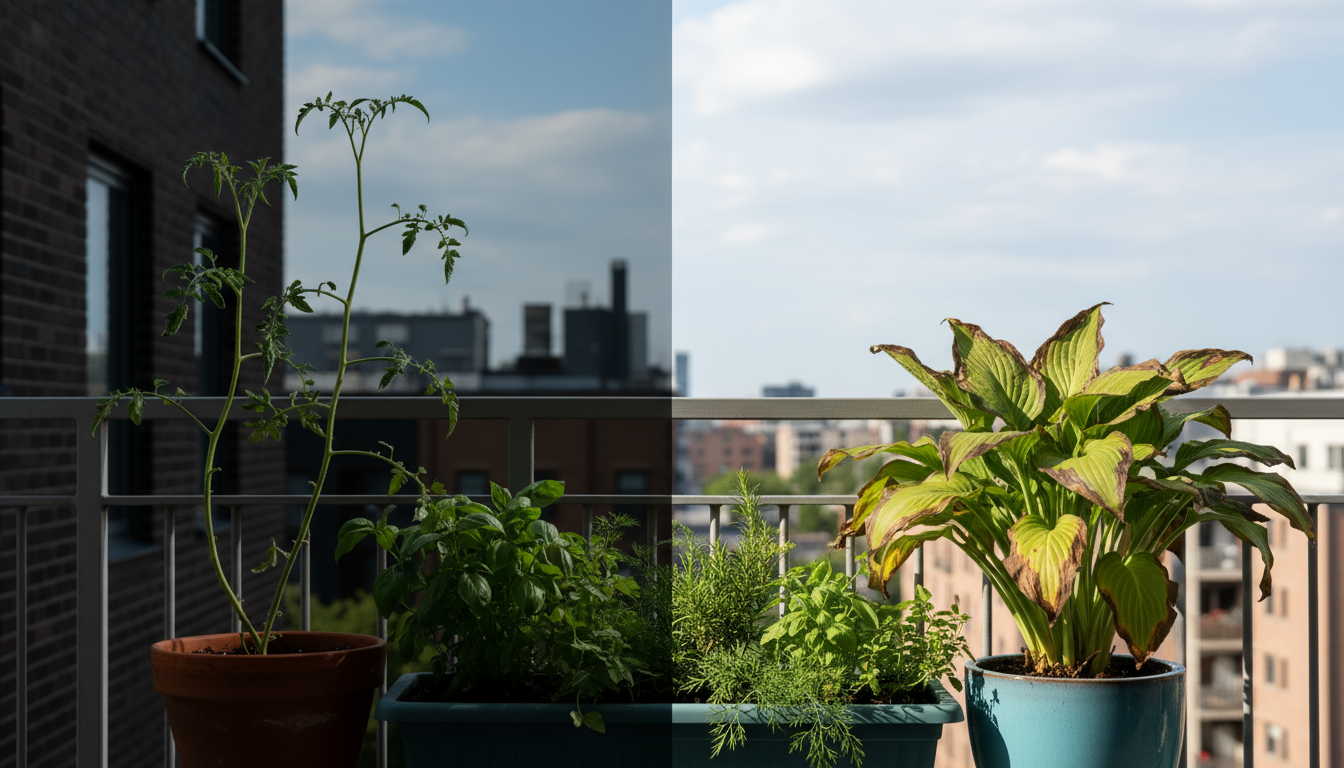
Mistake 6: Pest and Disease Issues
Problem: Container plants can still attract pests like aphids, spider mites, or whiteflies, or develop diseases such as powdery mildew.
Solution: Regularly inspect your plants, especially the undersides of leaves. Early detection is key. For minor infestations, a strong spray of water can dislodge pests. For more persistent issues, use insecticidal soap or neem oil, following product instructions. Ensure good air circulation around plants to prevent fungal diseases. Prune affected leaves immediately. Isolate any infected plant to prevent spread to your other patio pots.
By understanding these common issues and proactively addressing them, you ensure your container garden remains vibrant and productive, providing joy and bounty in your small space.
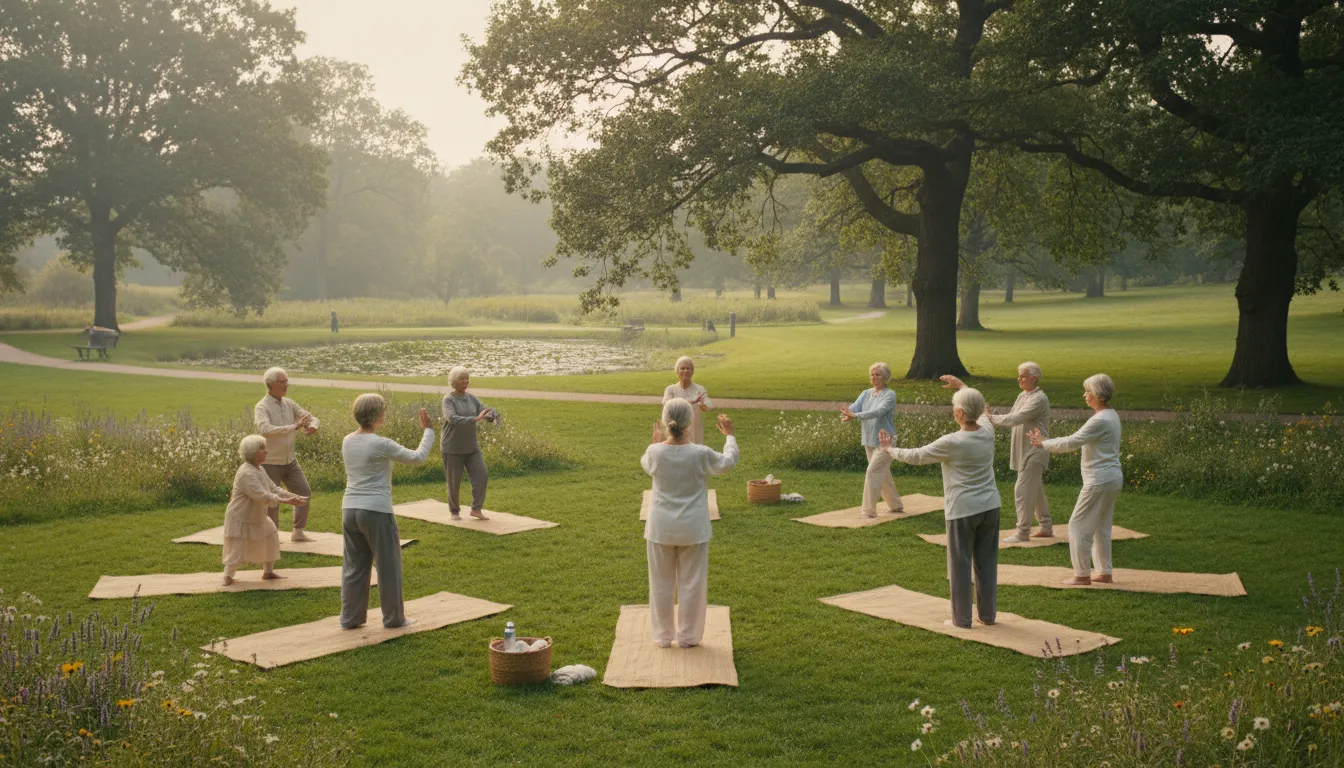
Sustainable Practices for Your Small-Space Garden
Embracing eco-friendly practices in your container garden benefits both your plants and the planet. Small adjustments can significantly reduce your environmental footprint, aligning with a sustainable lifestyle. You can make your small space gardening greener through smart choices in materials, water use, and plant care.

Recycle and Repurpose Containers
Give new life to items that would otherwise end up in a landfill. Old tires, plastic soda bottles (cut in half), tin cans, wooden crates, and even old boots can become charming and unique planters. Ensure you clean them thoroughly and, most importantly, drill drainage holes. This reduces waste and adds character to your balcony planters. Remember, any container is suitable as long as it holds soil and drains water.

Choose Sustainable Potting Mixes
Opt for potting mixes that use coco coir instead of peat moss. Peat harvesting has environmental concerns due to its slow regeneration and the disruption of peatlands, which are vital carbon sinks. Coco coir, a byproduct of the coconut industry, offers a renewable and excellent alternative. You can also enrich your potting mix with homemade compost, further reducing reliance on commercial products and recycling kitchen scraps.

Conserve Water Smartly
Water conservation is paramount, especially in container gardening where evaporation can be high. Implement these strategies:
- Collect Rainwater: Place small buckets or barrels on your balcony or patio to collect rainwater. This free, chemical-free water is ideal for your plants.
- Use Self-Watering Planters: These minimize water loss through evaporation and ensure plants receive consistent moisture, reducing your overall water usage.
- Mulch Your Containers: Apply a layer of organic mulch (like straw, shredded leaves, or wood chips) to the top of your potting mix. Mulch reduces water evaporation from the soil surface, suppresses weeds, and helps regulate soil temperature.
- Water in the Early Morning or Late Evening: Watering during cooler parts of the day minimizes evaporation, ensuring more water reaches your plants’ roots.

Embrace Organic Pest Control
Avoid synthetic pesticides. They can harm beneficial insects, pets, and the environment. Instead, use organic methods:
- Hand-Picking: For larger pests like slugs or caterpillars, simply pick them off and remove them.
- Insecticidal Soap or Neem Oil: These organic sprays are effective against soft-bodied pests like aphids and spider mites.
- Companion Planting: Plant herbs like marigolds or basil among your vegetables. Some herbs naturally deter pests. For example, marigolds can repel nematodes and whiteflies.
- Attract Beneficial Insects: Plant flowers that attract ladybugs, lacewings, and parasitic wasps. These insects prey on common garden pests.

Compost Your Plant Waste
Start a small-scale composting system for your kitchen scraps and garden waste. A worm bin (vermicomposting) is perfect for small spaces, producing nutrient-rich worm castings for your plants. This diverts organic waste from landfills and provides free, high-quality fertilizer for your patio pots and balcony planters. You close the loop, turning waste into nourishment for your plants.
By adopting these sustainable practices, you create a vibrant and environmentally responsible container garden. Your small space gardening efforts contribute to a healthier planet, one pot at a time.

Frequently Asked Questions
Can I use regular garden soil in my containers?
No, you should not use regular garden soil in your containers. Garden soil is too heavy and dense. It compacts easily in pots, suffocating plant roots by preventing proper air and water circulation. Garden soil can also contain weed seeds, pests, and disease pathogens. Always use a high-quality potting mix specifically formulated for container gardening. Potting mix is lighter, drains better, and is sterile, providing an ideal environment for your plants in confined spaces.
How often should I fertilize my container plants?
The frequency of fertilization depends on the type of fertilizer you use and the plant’s needs. If you use a slow-release granular fertilizer, it typically lasts for 2-4 months, requiring less frequent application. For liquid fertilizers, plan to feed your plants every 2-4 weeks during their active growing season. Always follow the specific instructions on your chosen fertilizer product, as over-fertilizing can harm your plants. Actively growing, flowering, or fruiting plants generally require more frequent feeding than those in dormancy.
What is “drainage,” and why is it so important for container plants?
Drainage refers to how well water moves through the soil and out of the bottom of a container. It is crucial for container plants because stagnant water suffocates roots, leading to a condition called root rot. Roots need oxygen to thrive. Without good drainage, excess water fills all the air pockets in the soil, depriving roots of vital oxygen. This causes the roots to decay and the plant to eventually die. Ensure your containers always have drainage holes and use a well-draining potting mix to prevent these issues.
My plant’s leaves are turning yellow. What could be wrong?
Yellowing leaves in container plants can indicate several issues. Overwatering is a very common cause, as it leads to root rot and oxygen deprivation. Underwatering can also cause yellowing, often accompanied by wilting and crispy edges. Nutrient deficiencies are another culprit; plants in containers quickly deplete soil nutrients, especially nitrogen, which can cause older leaves to yellow. Lack of sunlight or even pest infestations can also result in yellowing foliage. Check your watering habits, ensure proper drainage, consider fertilizing, and inspect for pests to identify the cause.
Can I grow vegetables in small pots on a windy balcony?
Yes, you can grow vegetables on a windy balcony, but you need to take precautions. Choose sturdy, heavier containers to prevent them from tipping over. Place pots in corners or against a wall for some wind protection. You can also install windbreaks, like sturdy trellises with climbing plants or mesh screens. Opt for compact, bushier vegetable varieties that are less susceptible to wind damage, such as bush beans, leafy greens, or smaller pepper plants. Provide stakes or cages for taller plants like tomatoes to offer extra support.
For trustworthy gardening information, visit:
New Mexico State University Extension — Gardening,
University of Alaska Fairbanks Extension — Gardening,
University of Hawaii Extension — Master Gardener,
Alabama Cooperative Extension — Home Grounds and
University of Kentucky Cooperative Extension — Yard & Garden. These organizations provide expert, research-based advice for gardeners at all levels.
Disclaimer: This article is for informational purposes only and is not a substitute for professional gardening advice. Always consult local extension services or horticulture experts for region-specific guidance.










Leave a Reply